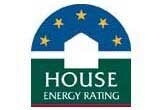Don’t trust your home’s star rating to reduce your environmental impact
Monday, January 10th, 2011Reports recently published in newspapers indicate that the government’s mandatory energy star rating schemes of homes is rather inaccurate. The scheme has been heavily-criticised by the building industry (HIA and MBA) and they are calling on scientists and the Department of Climate Change and Energy Efficiency to review the way the star rating is calculated for new houses.
Applying the same software to the whole continent is not the right approach either. Most importantly there is another fundamental issue that relates to the way a home is used –which has more to do with the occupants than the actual construction of the house itself.
The main problem cited by the building industry involves the three government-approved tools used to award the star six star rating. Basically it means that there are unacceptable differences between the star ratings produced by the various software tools when assessing the same house. The flaws in the star rating system were discovered after industry representatives, private companies and scientists commissioned independent studies to test the software tools on identical houses. For example the independent testing showed that the same Brisbane house had a variation of 3.2 stars when different software tools were used to audit it. In addition the software tools are easy to manipulate to get the desired results. A side issue is the under-qualified assessors who don’t operate under any quality programs.
The second issue relates to the fact the same software tools are used Australia-wide. Since the software tools mainly deal with heating and cooling to deliver a star rating they don’t take into consideration the varying climates found in Australia. In each part of Australia there will be different contributions of heating and cooling and we have little real data to help us in our understanding of by how much, or whether at all, star ratings will help reduce consumption. A respected scientist explained that the star rating doesn’t actually measure the electricity demand in a given house. So basically there is no correlation between the stars and GHG emissions.
It has been suggested that end-use metering study should be commissioned to determine overall home energy use, energy use by home appliances and the assessment of the thermal performance of the building shell for different housing types. Also, the overall performance of the recently-built six star homes should be assessed to create a valid database to establish if the star rating scheme has in fact helped reduce energy consumption.
The third observation was expressed by a university professor who explained that in reality the behaviour of the occupants of a house dictate the energy consumption. It doesn’t matter how many stars a home has if the occupants don’t use it responsibly. It could be stacked with electrical appliances like LCD screens, fridges or with inefficient halogen lighting. The software tools merely calculate the potential savings based on the fabric of the house, insulation, wall materials and of course the likely heating and cooling. Therefore, it is really up to the individual to act responsibly and to have an interest in reducing greenhouse emissions and of course their electricity bills.
For more detailed information and pdf file go to this site: https://carbonetix.com.au/why_your_5_star_energy_efficient_home_isnt.php
(Ref: http://www.theaustralian.com.au/news/features/eco-threat-to-house-prices/story-e6frg6z6-1225904124270 and
http://www.theaustralian.com.au/news/investigations/energy-star-ratings-in-disarray/story-fn6tcs23-1225899270215 )



